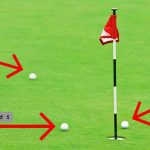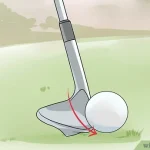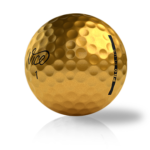Are you a golf enthusiast trying to improve your game? Or maybe you’re just getting started in the world of golf and wondering about the specifics of club distances. Either way, understanding how far you should hit a 7 iron is a crucial piece of knowledge for any golfer. In this article, we’ll break it down for you in simple terms, without getting lost in golf jargon. So, let’s tee off into the world of golf club distances!
Golf is a game of precision and strategy, and understanding the capabilities of each club in your bag is crucial to mastering it. One club that often finds itself in the spotlight is the 7 iron. In this comprehensive guide, we will explore everything you need to know about the 7 iron – from its basics to advanced techniques. Whether you’re a beginner, an intermediate golfer, or an advanced player, this article has something for everyone. So, let’s tee off and dive into the world of the 7 iron.
What Is A 7 Iron?
Let’s start at the beginning. For those new to golf, a 7 iron is one of the irons in your golf bag. It’s numbered “7” because it has a specific loft and distance it can cover. A 7 iron typically falls between a 6 iron and an 8 iron in terms of loft, making it a versatile club suitable for various situations on the course. Its loft allows for a good balance of distance and control, making it a favorite among golfers.
Key Points:
- Loft angle of a 7 iron: Approximately 30 to 34 degrees.
- Versatile club suitable for a wide range of distances.
- Ideal for approach shots and accuracy.
Iron – Beginner’s Guide
1. Understanding the Basics
Beginners, welcome to the world of golf! The 7 iron is an excellent club to start with because of its forgiving nature. It’s easier to control, and it can help you learn the fundamental aspects of a golf swing. Practice your grip, stance, and posture with this club to build a strong foundation for your golf journey.
2. Getting Started with the 7 Iron
For beginners, the 7 iron can be a reliable friend on the course. It offers forgiveness and ease of use, making it an excellent choice for honing your swing.
3. Finding Your Distance
As a beginner, it’s crucial to focus on consistent ball striking. Don’t worry too much about distance at this stage; instead, concentrate on improving your accuracy and control.
4. Building Confidence
The more you practice with your 7 iron, the more confident you’ll become. This club is perfect for building your golfing foundation.
You Read Also: How To Choose Cavity Back Irons: A Complete Buying Guide
7 Iron – Intermediate Golfers Guide
1. Precision and Distance
Intermediate golfers should strive to strike a balance between precision and distance when using the 7 iron. Understanding your swing speed and proper ball contact is key to achieving this balance.
2. Mastering the Art of Ball Flight
Work on controlling the trajectory of your shots with the 7 iron. This skill will help you navigate various course conditions effectively.
3. Shaping Your Shots
As an intermediate golfer, you can start experimenting with shot shapes. The 7 iron allows you to work on fades, draws, and straight shots.
7 Iron – Advanced Golfers Guide
1. Fine-Tuning Your Distance Control
Advanced golfers can refine their distance control with the 7 iron, ensuring they can place the ball exactly where they want it on the green.
2. Navigating Hazards
Utilize the 7 iron to expertly navigate hazards, such as bunkers and roughs. Its loft can help you escape tricky situations with precision.
3. Specialty Shots
Mastery of the 7 iron opens up opportunities for specialty shots, including high, soft-landing approaches and low, running shots.
7 Iron And PGA Tour Golfers
A. The 7 Iron: A Golfer’s Swiss Army Knife
1. Crafting the Perfect Approach Shot
When it comes to approach shots, precision is paramount. PGA Tour golfers understand the significance of the 7 iron in crafting these critical shots. Its unique loft and distance capabilities make it the go-to club for those precise approaches to the green. With a 7 iron in hand, golfers can control their trajectory and spin, allowing them to stick their shots close to the pin with remarkable consistency.
2. Navigating Challenging Terrain
Golf courses vary in their topography, from the lush fairways to treacherous bunkers and water hazards. PGA Tour golfers rely on the 7 iron’s versatility to navigate these challenging terrains. Whether it’s a high, soft shot to carry over a water hazard or a low, penetrating punch to escape a bunker, this club has their back.
3. Balancing Distance and Accuracy
In the world of professional golf, precision is just as crucial as power. The 7 iron strikes the perfect balance between distance and accuracy. It allows PGA Tour golfers to cover considerable yardage while maintaining control over the direction of their shots. This balance is often the key to conquering the most demanding courses on the PGA Tour.
B. The PGA Tour’s Love Affair with the 7 Iron
1. Statistical Dominance
Statistical analysis of PGA Tour events reveals a fascinating trend – the 7 iron is one of the most frequently used clubs by professional golfers. Its reliability and consistency in various situations make it a favorite choice. Whether it’s a par-3, a long par-4, or even an approach shot on a par-5, the 7 iron is often the club of choice for many pros.
2. Consistency in Scoring
The consistency offered by the 7 iron extends to scoring as well. Many PGA Tour golfers attribute their ability to consistently shoot low scores to their proficiency with this club. Its reliability in terms of both distance control and accuracy enables golfers to set up birdie opportunities and save pars from challenging positions.
3. A Versatile Weapon
PGA Tour courses are designed to challenge even the most skilled golfers. The 7 iron’s versatility shines as it adapts to the ever-changing demands of different courses. Whether it’s shaping shots around doglegs, reaching tucked pins, or escaping tricky lies, this club is a golfer’s Swiss Army knife.
How Far Does My 7 Iron Go?
Let’s start with a common question among golfers: “How far should my 7 iron go?” The answer isn’t a one-size-fits-all solution. The distance your 7 iron should cover depends on various factors, including your swing speed, skill level, and the condition of the course.
A well-struck 7 iron for an average golfer might travel around 140 to 160 yards. However, this can vary significantly. Some seasoned golfers can hit it over 170 yards, while beginners might reach around 100 yards. It’s essential to know your own abilities and limitations.
Factors Affecting Distance
Several factors influence how far your 7 iron can go:
1. Swing Speed:
Your swing speed plays a pivotal role in determining the distance your 7 iron can cover. A faster swing speed generates more ball speed and consequently more distance.
2. Clubhead Speed:
The speed at which you swing the clubhead also affects the shot’s distance. Proper technique and timing are essential to maximize clubhead speed.
3. Club Design:
Different brands and models of 7 irons have varying designs and technologies, influencing their distance potential.
7 Iron Chipping Guide
Chipping with a 7 iron can be a game-changer in your golfing repertoire. It allows you to execute shots with precision and control, especially when you need to navigate tricky situations near the green.
Mastering the Art of Chipping
To effectively chip with a 7 iron, follow these steps:
1. Choose Your Landing Spot:
Identify where you want the ball to land on the green. Visualize the trajectory and roll of the ball.
2. Grip and Stance:
Adopt a grip and stance that promote a descending blow on the ball. This helps create backspin and control.
3. Controlled Swing:
Use a shorter, controlled swing with a slight wrist hinge. Avoid over-swinging, which can lead to inconsistent results.
How To Effectively Chip With The 7 Iron?
Chipping with a 7 iron is a skill that can save you strokes on the golf course. Here are some tips to enhance your chipping game:
1. Practice Regularly:
Chipping is all about touch and feel. Regular practice sessions will improve your distance control and accuracy.
2. Experiment with Different Lies:
Practice chipping from various lies – uphill, downhill, and side hill. This will prepare you for real-world scenarios on the course.
When to Use Your 7 Iron
Knowing when to pull out your 7 iron is crucial. Here are some scenarios where it shines:
1. Approach Shot To The Green
One of the prime situations where the 7 iron shines is during approach shots to the green. When you find yourself a considerable distance from the green but within striking distance, opt for the 7 iron. Its loft allows you to make high shots that land softly on the green, giving you better control over the ball’s spin and roll.
2. Full Swing On a Par 3
Par 3s demand accuracy and precision. The 7 iron can be your best friend on these holes. With its moderate loft, you can aim for the pin confidently. Make a full swing, and watch your ball soar towards the green with remarkable accuracy.
3. Getting Out of Trouble
Sometimes, your golf ball ends up in tricky spots – behind trees, in bunkers, or deep rough. This is when your 7 iron can save the day. Its versatility allows you to escape tight spots by launching the ball high in the air and landing it safely back on the fairway.
4. Bump and Run
The bump and run shot is a valuable technique to have in your repertoire. When you need to navigate the ball across the green with minimal airtime, the 7 iron can execute this shot with finesse. It’s all about mastering the right touch to get the ball rolling smoothly towards the hole.
5. Perfecting Your Swing
Using the 7 iron effectively relies on a well-practiced swing. Focus on a smooth back swing and follow through. Remember that the power comes more from your body’s rotation than from excessive arm strength. Practice is key to mastering your swing with the 7 iron.
Other Clubs That Could Replace a 7 Iron
While the 7 iron is versatile, there are times when other clubs might be more suitable. Consider these alternatives:
6 Iron: For slightly more distance.
8 Iron: When you need a bit more loft.
Hybrid: Ideal for longer shots with forgiveness.
Wedge: Short-range shots around the green.
Advanced Techniques for the 7 Iron
Advanced golfers often seek ways to extract even more performance from their clubs. Here are some advanced techniques specific to the 7 iron:
1. Work on Shot Shaping:
As you become more skilled, you can intentionally shape your shots with the 7 iron. Learn to draw or fade the ball to navigate around obstacles or to better fit the hole’s layout.
2. Adjusting Loft:
Some modern clubs come with adjustable features that allow you to tweak the loft angle slightly. Experimenting with loft adjustments can fine-tune your 7 iron’s performance.
3. Controlling Spin:
Advanced golfers can manipulate spin with the 7 iron to stop the ball quickly on the green or allow it to release and roll farther. Practice controlling the amount of backspin you impart on the ball.
4. Course Management:
As your skills progress, focus on course management with the 7 iron. Analyze the course layout and choose your club strategically based on hazards, pin positions, and wind conditions.
Tips for Hitting Your 7 Iron Further
Want to squeeze extra yards out of your 7 iron? Here are some tips:
Swing Smoothly: Avoid over-swinging; a smooth, controlled swing can generate more distance.
Proper Stance: Ensure a balanced stance and weight shift for optimal power.
Grip Control: Maintain a firm but not tense grip on the club.
Follow Through: Let your clubhead follow through naturally to maximize distance.
Tips for Precision Chipping
Precision is key when using a 7 iron for chipping. Here are some additional tips:
1. Use the Bounce:
Let the club’s bounce (the bottom, curved part of the clubhead) do the work. It helps prevent digging into the turf and promotes cleaner contact with the ball.
2. Read the Green:
Pay close attention to the slope and grain of the green. These factors can significantly affect your chip’s line and speed.
Conclusion:
In conclusion, how far you should hit a 7 iron is influenced by a combination of factors, including your swing speed, club design, ball selection, environmental conditions, and personal skills. By understanding these elements and implementing the tips provided, you can work towards hitting your 7 iron shots with greater precision and consistency.
On average, most golfers can expect to hit their 7 iron between 140 and 160 yards. Remember to focus on finding the sweet spot and consider course conditions when making your club selections.
Remember, golf is a game of continuous improvement, and with dedication and practice, you can leave other golfers behind and achieve remarkable results on the course.
So, the next time you tee up with your 7 iron, harness this knowledge, and watch your shots soar toward the green.





